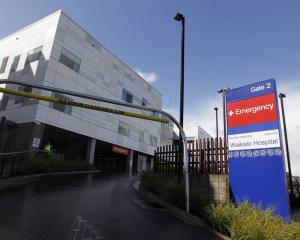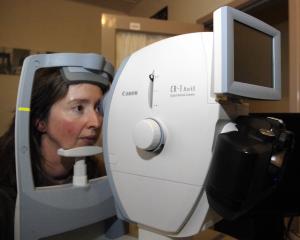A systems failure at BreastScreen Aotearoa meant 10,000 women received their two-yearly invitation for a routine mammogram later than they should have, an independent review of the programme shows.
It was not made public at the time.
The reference to the error comes in a highly critical 95-page review of the BSA by Australian breast-screening monitoring authority Jennifer Muller, dated August but released in mid-December.
While she praises the programme for its increasing participation rates and cancer detection, she is blunt in her concern about quality and efficiency issues, some apparently the result of cutting costs.
Mrs Muller's report is one of two review documents which followed concerns raised by screening providers over the sustainability of a quality national screening service.
The brief reference to the 10,000 women comes in a discussion about the need for a national register, with a networked clinical information system, to be established for the programme.
A national register was the "cornerstone of population screening that is essential in monitoring quality, performance standards and the outcomes of cancer screening programmes", the review said.
The review does not say how long the delay for the 10,000 women was, how it was detected, or what the impact may have been on women affected, particularly any found to have cancer whose diagnosis may have been delayed by several months.
According to the BSA programme standards, the gap between mammograms for enrolled women should not be more than 27 months.
National Health Board service improvement manager Jill Lane, who was still on holiday and said she would answer Otago Daily Times questions in detail next week.
However, she said her recollection was that there was not a "huge" delay.
She confirmed all women affected were followed up promptly once the error was discovered.
They were also invited for screening.
It is understood the error occurred at a time information was being collated from eight breast-screening services in New Zealand, during a process of upgrading and standardising software.
The upgrading is expected to have reduced the possibility of a similar error occurringin the programme, which screened 331,000 women in the two years to December 2010.
Otago University's Associate Prof Brian Cox, who is a cancer researcher and a cancer screening specialist, said the timing of screening mammograms was important because cancers could develop quickly.
There was much less leeway than for cervical screening, where cancers developed slowly and screening relied on the observation of smear tests over time.
Mrs Muller said a theme from her interviews for the report was that the National Screening Unit, which the BSA comes under, had shifted its focus to compliance and contract management and away from co-ordination and collaboration with the providers to deliver a quality programme.
Clinical directors and managers in screening services said performance management analysts were focused on compliance on such issues as whether a client satisfaction questionnaire had been completed "and not those issues of quality that are critical in a breast-cancer screening programme such as timeliness of recall to assessment, or the clinical outcomes".
The report raised issues about the time taken for some women to receive biopsies and biopsy results of suspected cancers and first surgical treatments, although Mrs Muller acknowledged these issues might be "to some extent" beyond the control of the BSA.
Concern was expressed that scheduled three-yearly audits of the screening providers were delayed in 2008-09 due to lack of funding.
It was often stated in her review interviews that "the current NSU senior management did not seem to understand breast-cancer screening or the principles of population screening and the high-risk nature of the programme, which underlined the need for close monitoring of the quality of every aspect".
Prof Cox said for the last eight years he had lacked confidence in the philosophy of the NSU where the unit had been unable to hold people with the necessary skills.
"Clinical skill in terms of screening should be the focus of leadership of the screening unit, not the dollars and cents of contracts."
Properly organising and monitoring the programme was the best way to ensure it was beneficial and minimised risks, Mrs Muller said.
This could be achieved and sustained by re-establishing a dedicated team for the programme.
The NSU would also need to be "reinvigorated and recognised as providing national leadership in cancer screening" with sufficient staff to do this.
Prof Cox agreed with Mrs Muller's concern about the lack of yearly interval cancer studies, research she described as a key performance outcome for breast screening programmes.
Only recently was such a study commissioned, five years since the last one.
These studies look at cancers found in the time between one routine mammogram and the next.
The last routine mammogram can then be checked to ensure nothing was missed at that point.
Prof Cox said such studies involved some auditing of medical practice and "that's where the stumbling block comes in" as it could be quite "uncomfortable".
The screening programme's advisory groups were "supposed to be full of experts" and he questioned what they had been doing.
It appeared people who understood what was involved with screening were not being listened to or given credit for their expertise.
Sometimes the Ministry of Health shuffled work on to "a committee of experts" which was not really that group's work as a way of avoiding issues the ministry did not want addressed.
Mrs Muller's review pointed out meetings for the programme's advisory groups had been "somewhat curtailed in recent years" due to the Minister of Health Tony Ryall's directives to reduce the number of committees providing advice to the ministry.
"This does not recognise the importance of these groups as part of the quality management structure of the BSA programme."
Interviews with the BSA advisory group revealed there were strong concerns for the safety and quality of the programme and a view of "feeling unsafe" had been expressed.
Direction
- Applications close on Monday for a project director to support the implementation of the recommendations from a critical independent review of BreastScreen Aotearoa.
- At this stage, the steering group set up to look at the 22 comprehensive recommendations for the direction of the programme within the National Screening Unit from the two review reports released in December does not appear to have made any decisions.
- The two documents written by two Australian women, breast-screen monitoring authority Jennifer Muller and management consultant Dianne Gillis, followed concerns raised by the clinical director of the Counties Manukau breast-screening programme last January, about the effect of resignations of key senior staff from the National Screening Unit, which oversees BSA.
- Mrs Muller said proposed changes would require careful planning and were likely to take three to five years.
- The steering group will be chaired by Dr Don Mackie, the Ministry of Health's recently appointed chief medical officer.











